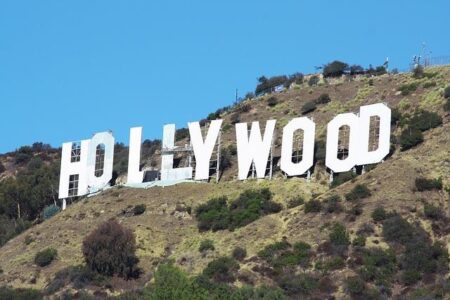Unpacking the Expansion of Federal Policing Powers During the Trump Era
In recent years,concerns voiced by civil rights advocates about the growing reach of law enforcement have materialized into a stark reality.Under the Trump administration, the vision of a heavily armed and empowered police force—often criticized as edging toward authoritarianism—has taken concrete shape. This article examines the policies and consequences of this shift, tracing how years of political rhetoric translated into a controversial overhaul of law enforcement authority and public oversight.
Authoritarian Shifts in Policing and Their Toll on Civil Rights
The Trump administration’s aggressive strategy to centralize and amplify law enforcement powers marked a notable departure from conventional democratic safeguards. This approach was characterized by a troubling erosion of constitutional rights, notably those enshrined in the First and Fourth Amendments. The administration’s portrayal of protesters as hazardous agitators provided justification for harsh crackdowns, including the deployment of militarized police forces and the relaxation of limits on surveillance and use of force.
Notable tactics implemented included:
- Sending federal agents into cities without local government approval
- Employing forceful crowd control techniques such as tear gas and rubber bullets
- Broadening surveillance programs targeting activists, journalists, and minority communities
- Introducing restrictive voting laws under the pretext of election security
These measures ignited widespread protests and alarmed legal experts and civil rights groups. The table below contrasts the state of key civil liberties before and after these escalations:
| Civil Liberty | Pre-Expansion | Post-Expansion |
|---|---|---|
| Right to Peaceful Protest | Generally respected with limited interference | Frequently met with aggressive police responses |
| Government Surveillance | Subject to judicial checks and clarity | Significantly increased with limited oversight |
| Access to Voting | Broadly accessible with protections | Constrained by new restrictive legislation |
| Press Freedom | Protected with legal safeguards | Often undermined and targeted |
Federal Agencies’ Role in Intensifying Surveillance at the State Level
During Trump’s tenure,federal agencies significantly expanded their collaboration with state and local law enforcement,creating a more integrated and invasive surveillance network. What was once a fragmented system evolved into a coordinated federal effort, equipping local authorities with advanced surveillance technologies and intelligence-sharing mechanisms. Key players included the Department of Homeland Security (DHS),the Federal Bureau of Examination (FBI),and Immigration and Customs Enforcement (ICE),each contributing to a broader federal footprint in local policing.
- DHS’s Strategic Partnership Program enhanced intelligence sharing across jurisdictions.
- The FBI’s increased involvement in joint task forces enabled real-time surveillance operations.
- ICE’s cooperation with local agencies intensified monitoring of immigrant populations under national security claims.
The following table outlines the primary roles and impacts of these agencies on state-level surveillance:
| Agency | Surveillance Function | Effect on State Policing |
|---|---|---|
| DHS | Facilitated intelligence sharing and training | Strengthened cross-jurisdictional data networks |
| FBI | Led joint task forces and digital monitoring | Expanded real-time surveillance capabilities |
| ICE | Implemented enforcement with surveillance technology | Increased scrutiny of immigrant communities |
This fusion of federal and local efforts effectively entrenched a more intrusive surveillance regime, fulfilling the administration’s long-expressed ambitions for a fortified policing infrastructure.
Legal and Political Ramifications of Enhanced Police Authority
The broadening of police powers under the Trump administration has provoked intense debate and legal challenges. From a judicial perspective,these measures test the limits of constitutional protections,especially regarding privacy and free expression. Courts are increasingly confronted with cases involving novel surveillance technologies and expanded arrest powers,which may redefine the balance between public safety and individual rights for years ahead.
Politically, the centralization of law enforcement authority has deepened divisions.Proponents argue that these policies bolster national security and public order, while opponents warn of creeping authoritarianism that threatens democratic institutions. This polarization is evident in:
- Legislative stalemates over oversight and reform initiatives
- Escalating civil unrest marked by protests and resistance movements
- Realignments in political coalitions as parties reassess their positions on policing
| Issue | Potential Result | Stakeholder Reaction |
|---|---|---|
| Mass Surveillance | Significant privacy infringements | Strong opposition from civil liberties groups |
| Expanded Detention Powers | Threats to due process rights | Legal challenges from advocacy organizations |
| Police Militarization | Increased incidents of excessive force | Heightened public protests and demands for reform |
Strategies for Reinstating Oversight and Safeguarding Democratic Rights
Addressing the troubling expansion of authoritarian policing requires immediate and extensive reforms aimed at restoring accountability and protecting civil liberties. Establishing and empowering independent oversight bodies is essential to monitor law enforcement activities, ensuring transparency and curbing abuses of power. Legislative frameworks should mandate routine audits, public disclosures, and enforceable penalties for violations.
Equally critical is the enhancement of whistleblower protections, enabling insiders to report misconduct without fear of retaliation—an indispensable element for democratic accountability. Furthermore, fostering civic education and engagement is vital to empower citizens to actively participate in governance and policy-making processes.
The table below summarizes key policy recommendations to reverse the erosion of democratic freedoms:
| Policy Initiative | Objective | Expected Outcome |
|---|---|---|
| Civilian Oversight Boards | Independent review of police conduct | Greater transparency and reduced misconduct |
| Whistleblower Safeguards | Protect insiders exposing wrongdoing | Enhanced accountability and deterrence of corruption |
| Privacy Protection Laws | Limit intrusive government surveillance | Preservation of civil liberties and public trust |
| Civic Participation Programs | Educate and engage the electorate | Stronger democratic institutions and informed voters |
- Ensure transparency through open data initiatives and regular reporting.
- Implement strict legal consequences for violations of democratic principles.
- Support independent journalism as a watchdog against abuses of power.
- Protect voting rights to guarantee free and fair elections nationwide.
Looking Ahead: Balancing Security and Freedom
As the political environment continues to shift, the Trump administration’s legacy of expanded law enforcement powers represents a pivotal chapter in American governance. Whether this trajectory will lead to greater stability or deepen societal divisions remains uncertain. What is clear, however, is that the nation faces urgent questions about how to reconcile the demands of security with the preservation of fundamental civil liberties. The ongoing dialog and policy decisions in the coming years will shape the future of democracy in the United States.



